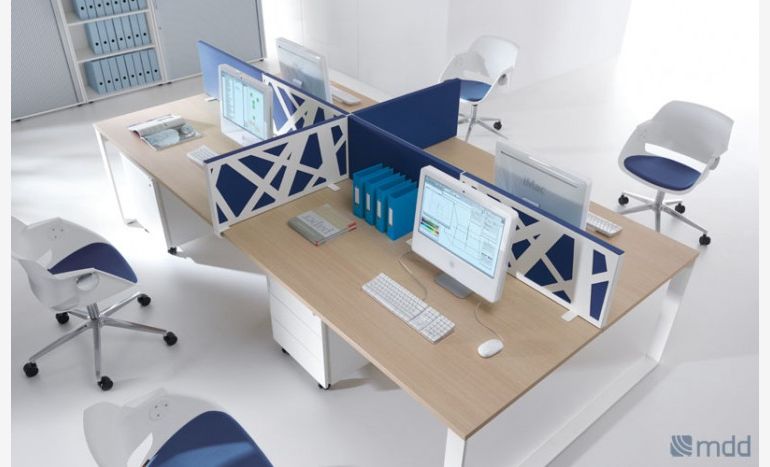We also must not forget that the rise in popularity of open spaces is proportional to the rise in a number of corporations working in our country. Open space arrangement is characteristic especially for them.
A modern moderation
The main idea of open space arrangement, invented in the United States, is an optimum usage of usable space and making communication between all of the employees easier. This is why people resign from having a number of separate rooms in favour of big, open spaces. Consequently, furniture is of great significance here, both the way it is arranged and its colours. The base of open space systems are desks, which can be combined into groups and teams. People often use desks on wheels, which are more mobile – explains Dariusz Michalski, the owner of JARD Meble Biurowe company.
Furnishing of an open space office is an ideal setting to demonstrate the skills of designers and interior architects. The designers of such spaces most often choose minimalism, lightness and modernity. Uniform colours of the furniture are mixed with accents having more vivid and bold colours, which liven up space but do not overwhelm it.
Much is dependent on the character of the company, which is to be the future tenant. It is important to remember, that architects and people responsible for phone contact with the client will have different expectations considering their workspace. In the latter case, it will be essential to create, for example, soundproofing, desk-mounted screens. Open space systems are working well in offices, where there are many people doing customer service, for example call centers, or where there are people doing standard office work. The aim of open space was to make it possible to do projects, which demanded working in teams of a few to several people. Within the framework of open space it was easy to sit these people near each other and enable them to work as a team. It was much more difficult to have conditions to do creative work, as it was hard to find a place in which is was possible to gather one's thoughts – explains Dariusz Michalski, the owner of JARD Meble Biurowe.
Yes, but...
Among the assets of office space arranged as open space there is, first of all, integration of the workers, making communication between them easier and creating good conditions for interacting. As a result, it is a perfect foundation for building company identity and boosting creativity. Other undoubted assets of open space include the possibility of controlling the employees end the possibility of making employee teams – notes Dariusz Michalski.
But you cannot forget practical factors. It turns out that open space allows for the more effective usage of space. Additionally, this type of arrangement is less expensive than furnishing the office in a traditional way.
When the supporters of this type of arranging office space see it as a chance to integrate the employees and make their work more effective, the opponents say, that it does not create optimum working conditions. According to the sceptics, noise, lack of privacy and too many distracting stimuli render the employees' comfort smaller and also affect the quality of tasks they carry out. I would say that its drawbacks also include lack of space for creative work and the impossilibity of finding one's place in the company. Because of that, moving from open space to smaller rooms is often seen as a promotion – adds Dariusz Michalski.
A happy medium
Undecided employers, who like the assets of open space, but also want to give their employees more privacy, required by the job's character, are advised halfway means. This could be, for example, separate but well-communicated rooms. Another way is to have divided open space, but with a possibility of eye contact. This is achieved by using glass walls, allowing to shape space according to the way employee teams are divided. These walls also protect from the noise, prevalent in standard open spaces. Rooms, divided in such a way are good for creative work, at the same time allowing for eye contact – says Dariusz Michalski.
It is difficult not to agree both with the arguments of supporters and opponents of open space systems. This is why one of the most important factors, taken into consideration by the employers deciding how to arrange workspace, should be the character of the work done there. As it turns out, what may be an asset, augmenting the effectiveness of one professional group, can be a crucial obstacle in doing work for another.





